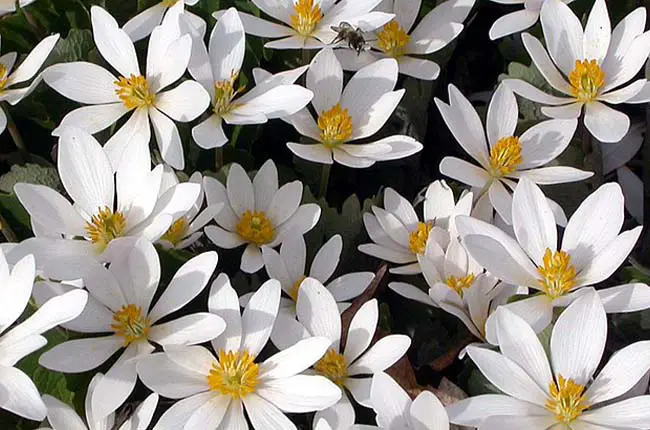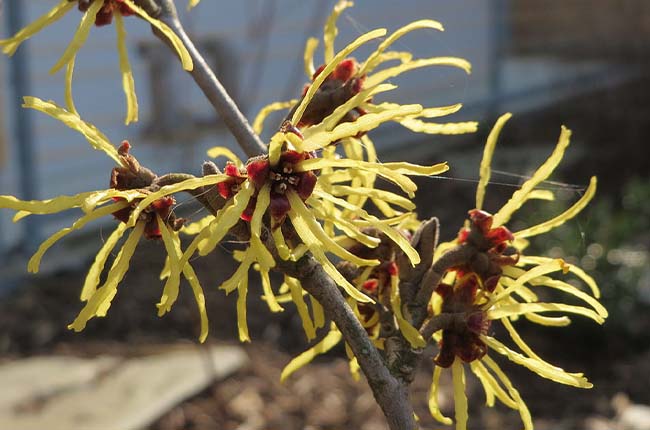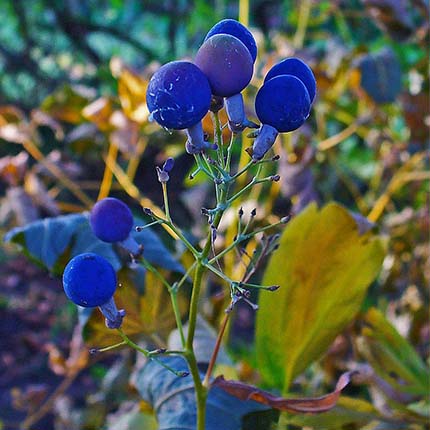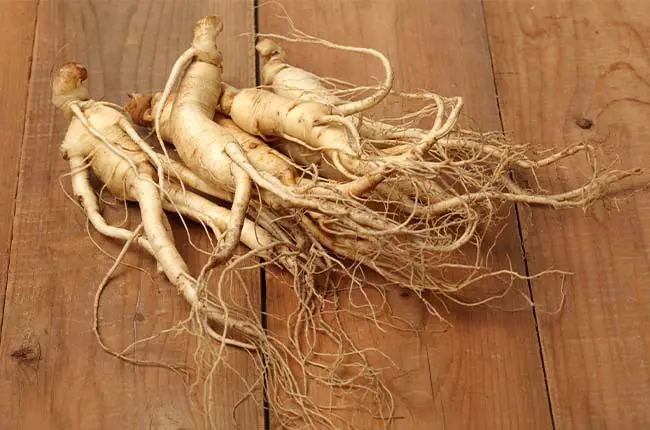Ever wondered how some plant roots can be worth hundreds of dollars?
In this article, we have found 9 most expensive wild plants and will explain why they cost so much.
Most endangered
1. American Ginseng
American Ginseng (Panax quinquefolium or Panax quinquefolius) is a small perennial, herbaceous plant that grows to about 1 foot tall (30 cm). It grows wild in forests in the shade and produces red berries.
It grows wild in the entire eastern half of North America, from Florida in the South all the way to Quebec in the north.
American Ginseng is harvested for its roots, but once harvest the roots go bad very quickly. For this reason, it’s either consumed raw very soon after harvesting, dried and turned into powder, or preserved in liquor.
It’s primarily used as an herbal tea, but can be consumed as a health supplement, and added to food.

The dried roots can sell for $200 to $280 per pound (450 grams). But, the whole intact roots are worth the most money. The reason it’s so expensive is it takes about 8 years to harvest.
And many American Ginseng plants don’t survive, because they are eaten by pests. On average, only 1% of wild-simulated American Ginseng plants survive.
There are three ways that ginseng can be grown:
- Farmed – least expensive, because it is grown in a nursery.
- Wild simulated – more expensive because its seeds or root cuttings are propagated and grown in the wild.
- Wild harvested – most expensive, because it is grown completely in the wild.
The wild-simulated and wild-harvested American Ginseng can be differentiated because they have knobs, scars, and notches. But farmed Ginseng roots (rhizome) look smooth and straight because they can grow virtually unhindered in a controlled environment.
2. Goldenseal
Goldenseal (Hydrastis canadensis), also called orangeroot or yellow puccoon. It is a perennial herb that grows to a maximum height of 12 inches (30 cm). It takes 3 to 5 years for a Goldenseal plant to reach maturity.
It grows best in 65% to 75% shade and in really loamy soil you can plunge your hands into.
It is native to Vermont, Michigan, Minnesota, Virginia, Alabama, Tennessee, and Arizona. But, it grows in the entire Western half of the United States.
It has unusual, small flowers with about 20 white cylindrical petals. The leaves are mid-green. It’s a very rare plant that grows in the wild.
Goldenseal roots are made into a powder, or extract that has the following properties:
- Kills germs on contact
- Antimicrobial
- Anti-fungal
- Good for treating acne as an additive in face ointments
- Made into yellow dye for clothing
- Good as a digestive aid
- Good for treating diarrhea
Goldenseal powder or extract is very potent and can have negative health effects on people with blood pressure issues. If a person has blood pressure issues, they should talk to their doctor first before consuming it.
It has large broad leaves slightly bigger than an adult hand, and about 8 to 10 inches (20 to 25 cm) of thin roots, that come out from a brown notch called a rhizome, and is covered with fibrous roots. It grows in clusters of plants and individual plants can be removed, and the rest replanted.

Goldenseal extracts that are higher in alkaloids fetches a higher price. For every 1% increase in alkaloid content, it increases the price by $10 per pound (450 g). Growers send Goldenseal to the lab to get tested for its alkaloid content prior to selling it. It sells for about $16 per pound (450g) if grown organically.
Not as endangered
3. Bloodroot
Bloodroot (Sanguinaria canadensis) is a beautiful, small wildflower that grows a maximum of 14 inches (35 cm) in height. As it grows, the leaves unfurl to reveal the medium-sized white flower that grows from the middle of the plant. The flower dies very quickly, sending out a separate stem with the seed pod.
It’s native to Quebec and Manitoba in Canada as well as Florida, Alabama, and Texas in the USA. But, it can grow in virtually any state in the USA and Canada.
It grows in partial shade to full shade and in moist soil.
It’s harvested for the roots which are blood red in color and about the size of an adult’s finger. The roots (rhizomes) can be cut to propagate new plants. It can also be grown from seed.
The extract or supplements made out of the powder are used to treat:
- Coughs
- Infections
- Inflammation
- Cancer
It takes 3 years to reach a size where the roots can be harvested. It sells for about $35 per pound (450 g) when grounded into powder.

(David D. at the English-language Wikipedia, CC BY-SA 3.0, via Wikimedia Commons)
4. Sassafras
Sassafras (Sassafras albidum) is a large tree that gets to 35 to 50 ft (10m to 15m) in height when fully grown. It grows 13 inches to 24 inches (about half a meter) per year, and takes about 10 years to grow to its maximum height.
It is native to the states of Maine, Kansas, Florida, Texas, and Michigan but grows in virtually every state in the USA, and the state of Ontario in Canada.
It was one of the original ingredients in root beer and was originally thought to be a miracle cure for everything. However, in recent times it has only been found to be effective at treating eczema and psoriasis.
It can be easily identified by the usual shape of the leaves, which appear to have a piece cut out of one or both of the sides.
It produces fruit that is dark blue in color, and flowers that are brown, green, and yellow. The tree is mainly harvested for its bark and roots.
The roots are made into essential oils that are used in soap and also in tea.
The roots are quite expensive and sell for around $32 a pound (450g). It grows virtually everywhere such as in forests, on the side of the road, and is very dense so it is also used for fencing.

5. Mayapple
Mayapple (Podophyllum peltatum) gets its name because in the month of May it produces a white to light pink-colored flower that looks similar to an apple blossom.
It is a very small perennial, and only grows to a height of 18 inches (45 cm) when fully grown. It produces only 2 leaves per plant, but each leaf is large, about the size of a dinner plate. It has one flower that sits in the center of the plant.

(Willthomas, CC BY 4.0, via Wikimedia Commons)
It grows in full to partial shade and is native to Quebec, Ontario, Florida, Maine, New England, Kansas, and Texas.
It grows in virtually every state in the USA and in Ontario, Quebec, Nova Scotia in Canada. It grows in a range of different soil conditions from sand to moist and loose soil found on a forest floor.
Extreme care must be taken when working with this plant. The leaves, stems, and fruit (even unripe ones) can be fatal if these parts are consumed.
The extract is sold for around $10 a fluid oz (about $10 a pound). This is based on the fact that creating an extract yields typically 5% of the organic matter used.
In traditional medicine, it was used to make tea to treat constipation and used to treat warts as well as lung cancer.

6. Witch hazel
Witch-hazel (Hamamelis virginiana) is a perennial tree that grows 6 to 12 feet (1.8 to 3.6m) in height. It prefers moist soil and low elevations.
It’s native to Quebec, Nova Scotia, Michigan, Maine, Florida and some counties in Texas. But, it can grow in virtually all states in the USA.
It produces fruit that is small brown capsules. These are eaten by birds, beavers, and deer. It grows best in full shade to partial shade. It’s primarily used by creating an extract out of the bark.
It produces medium-sized yellow flowers that form clusters. They have long cylindrical petals, that are similar in appearance to spaghetti noodles. Each individual petal grows to about 2 inches longer (5 cm).

(AnRo0002, CC0, via Wikimedia Commons)
This extract is used in shaving lotions, in eye wash, and in creams for treating burns, rashes, insect bites.
In recent times, Witch Hazel extract has become very cheap, and the bark used to make the extract sells for about $2.50 a pound (450 g). It’s now widely available, so the supply has driven the price of Witch Hazel much lower.
It is very easy to grow and forgiving of soil and weather conditions. The only places it won’t grow are in boggy areas.
7. Black Cohosh
Black Cohosh (Actaea racemosa or Cimicifuga racemosa), also called Rattletop, is a perennial that grows to a maximum of 8 feet (2.4) meters. This height is mainly due to unusual and beautiful long cylindrical flowers that are typically white in color.
It’s primarily found growing wild in the states of Delaware, and Florida. It grows wild in moist soil found on slopes, next to creeks, meadows, and around forest edges. It grows fairly easily provided the soil is moist. It blooms from late summer to early autumn.
Black Cohosh is reasonably easy to grow and can be grown from seed, or from cuttings of the rhizomes. It takes about 3 years for a Black Cohosh plant to grow to a size where it can be harvested.
Its main use is to alleviate menstrual-related symptoms caused by menopause, cramps and PMS.
On average, Black Cohosh roots sell for $40 per pound (450 g), often sold in extract or capsule form.

8. Wild Ginger
Wild Ginger (Asarum) is a perennial. Unlike other forms of ginger the plant only grows to 4 to 8 inches in height (10 cm to 20cm). It grows in clusters, each with two stalks. At the base of the stalk at ground level it has a single flower, about the size of a quarter and is cup-shaped and purple-maroon in color.
The leaves are green and have a soft velvety feel to them. The leaves are heart-shaped but grow in a cup-like shape. It grows best in moist soil that is shaded to partly shaded.
This plant is mostly grown for its roots. There is very little info about how much wild ginger sells for. But organic regular ginger sells for $20 per pound (450g). Wild ginger can also be consumed like regular ginger you find at the vegetable store.
In Native American culture, it was used to treat tuberculosis, coughs, and colds.
It’s also grown for it’s for its scent, which is used as an additive in a wide range of products such as perfumes, face creams, and balms. Wild ginger is very easy to grow, and it will colonize an area creating a full ground cover, and choking out any weeds.
Regular ginger is in fairly high demand, and wild ginger can be sold as an interesting product, as the flavor is slightly different. Wild ginger is very easy to grow, and it will colonize an area creating full ground cover, and choking out the weeds.
9. Blue Cohosh
Blue Cohosh (Caulophyllum thalictroides) is a perennial that grows 1 ft to 3 ft (30 cm to 90cm) tall. On the same plant, it produces flowers of two different colors (yellowish-green and brownish-purple).
These form in tight clusters and each flower is about 1 inch (2.5cm) in diameter. It has a medium foliage density and thin stems. Blue Cohosh grows best in moist well-draining soil and full shade.
After the flowers fall off, they produce clusters of 5 to 10 poisonous blue-colored berries. In large amounts, blue cohost and blue cohosh extract are toxic and can induce vomiting and diarrhea.

(H. Zell, CC BY-SA 3.0, via Wikimedia Commons)
Blue Cohosh extract is used for inducing labor, to treat constipation, hiccups, epilepsy, infection or swelling of women’s reproductive organs. In Native American culture, the flowers were used during pregnancy to induce labor.
All parts of this plant are made into products. It’s common to find Blue Cohosh extracts, made from the flowers and roots. A 1 oz bottle of pure Blue Cohosh extract sells for around $10 to $15.
Davis, J. & Greenfield, J. (2006). Bloodroot (Sanguinaria canadensis L.)
Memorial Sloan Kettering Cancer Center. Bloodroot.
Krochrnal, A. et. al. (1974). MAYAPPLE (Podophyllum peltaturn L.)
WebMD. Black Cohosh – Uses, Side Effects, and More
WebMD. Blue Cohosh – Uses, Side Effects, and More
Kaiser Permanente. Blue Cohosh
- Keiki Paste vs Rooting Hormone:What’s the difference? - February 4, 2024
- Top 10 Orchid Fertilizers: A Comprehensive Review (2024) - February 2, 2024
- Top 8 Soil Inoculants For Stronger Plants (2024) - February 1, 2024

